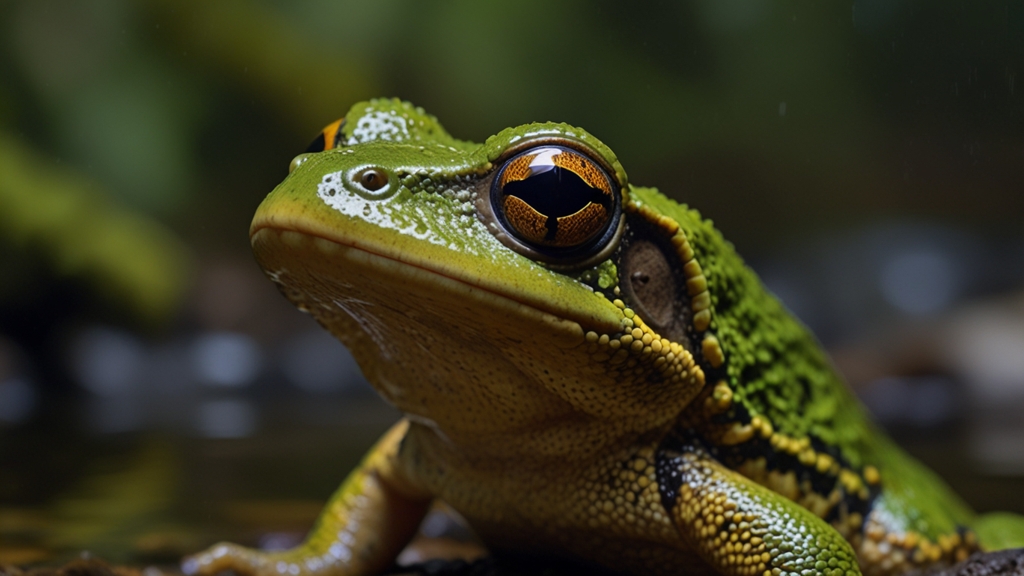Unmasking the Mysteries of Amphibian Behavior: What the Experts Say
Amphibians are a remarkable group of animals known for their dual existence, navigating both water and terrestrial environments. Their ability to thrive in such diverse habitats has long intrigued scientists, leading to extensive research aimed at understanding their mysterious behaviors. From the rhythmic croaking of frogs to the stealthy movements of salamanders, amphibians exhibit a wide range of fascinating behaviors that continue to captivate biologists and ecologists alike. Here’s what the experts say about these enigmatic creatures.
Communication: The Symphony of the Swamps
One of the most intriguing aspects of amphibian behavior is their complex systems of communication. Frogs and toads, in particular, are known for their vocalizations. Male frogs serenade potential mates with a variety of calls, each serving a specific purpose. These vocalizations are not just random sounds but are carefully modulated signals that convey information about the caller’s species, reproductive status, and even physical fitness.
"Frog calls are essentially the amphibian equivalent of a dating app profile," says Dr. Karen Lips, a renowned herpetologist. "They provide crucial information that helps females select the best possible mate, ensuring the survival of their offspring."
In addition to vocalizations, amphibians also use visual signals and chemical cues to communicate. Some salamanders, for example, employ a combination of body postures and pheromones to attract mates and deter rivals. These multi-modal communication strategies are not only fascinating but also underscore the complexity of amphibian social interactions.
Adaptations: Masters of Environmental Cues
Amphibians are incredibly adept at reading and responding to environmental cues. This keen sense of their surroundings is a survival mechanism that enables them to thrive in diverse and often challenging environments. Many species exhibit remarkable behaviors such as seasonal migrations, moisture-conserving burrowing, and temperature-based dormancy.
For instance, the American toad undergoes a process called aestivation during periods of extreme heat or drought. This state of dormancy allows the toad to conserve moisture and energy until more favorable conditions return. Similarly, many amphibians engage in hibernation during cold winter months, burrowing into the ground or taking refuge in aquatic environments to maintain a stable body temperature.
Parental Investment: Beyond Spawn and Go
Contrary to the common perception that amphibians are indifferent parents, many species exhibit considerable parental investment. Some frogs, such as those belonging to the genus Dendrobates, are known for their elaborate parental care. These poison dart frogs lay their eggs in moist environments and transport the hatched tadpoles to water-filled bromeliad plants where they can grow safely.
"Parental care in amphibians is more common than people realize," notes Dr. James Collins, an expert in amphibian ecology. "These behaviors are critical for the survival of their offspring, especially in environments with high predation risk."
Similarly, certain species of salamanders guard their eggs vigilantly, protecting them from predators and ensuring they remain moist. These behaviors highlight the adaptive strategies amphibians employ to maximize their reproductive success.
Predator-Prey Dynamics: The Art of Ambush
Amphibians often find themselves both predators and prey, a dual role that has shaped their behavioral patterns significantly. Many amphibians employ ambush tactics to capture their prey. Frogs, for example, use their sticky tongues to snatch insects and small invertebrates with lightning speed. Some species, such as the African bullfrog, exhibit sit-and-wait strategies, lying motionless until unsuspecting prey comes within reach.
On the flip side, amphibians have evolved various defensive strategies to evade predators. The bright colors of poison dart frogs serve as a warning to potential predators about their toxic skin. Meanwhile, some salamanders can detach their tails when threatened, distracting the predator and allowing the salamander to escape.
Conclusion: A Window into Amphibian Worlds
The behaviors of amphibians are as diverse and intricate as the environments they inhabit. From their complex communication systems to their remarkable adaptations and parental care strategies, these creatures offer a glimpse into the intricate tapestry of life in aquatic and terrestrial realms. As experts continue to study and unmask the mysteries of amphibian behavior, we gain a deeper appreciation for these fascinating animals and the roles they play in our ecosystems.
"Understanding amphibian behavior is not just about academic curiosity," emphasizes Dr. Karen Lips. "It holds the key to conserving these incredible creatures and ensuring the health of the ecosystems they inhabit."
Indeed, as we deepen our understanding of amphibian behavior, we are better equipped to protect these vital links in the chain of biodiversity, ensuring they thrive for generations to come.








